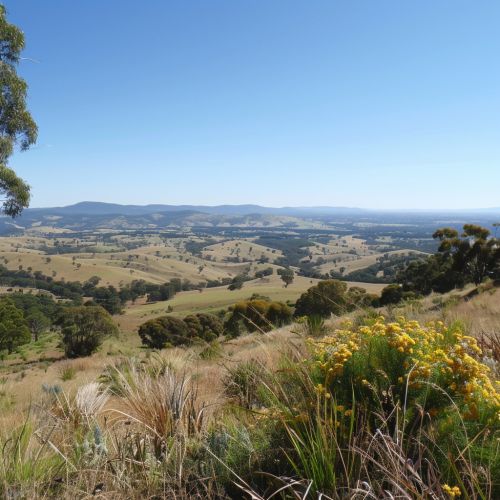Victoria (Australia)
Geography
Victoria is the smallest mainland state in Australia. It is bordered by South Australia to the west and shares a border with New South Wales to the north. The Bass Strait, a sea channel, separates it from the island state of Tasmania to the south. The state encompasses a range of climates and geographical features from its cool alpine regions to its warm sandy beaches.


Climate
Victoria's climate varies across the state. The north has hotter, drier conditions, while the coastal regions, particularly along the south and east, experience cooler, wetter weather. The alpine regions in the northeast have a cold climate with heavy winter snowfall.
History
Victoria's history is marked by the discovery of gold in the 1850s, which led to the Victorian gold rush. This event had a profound impact on the state's population, economy, and standing within the Australian colonies. The influx of wealth from gold and the influx of people led to rapid and extensive urban and rural development.
Economy
Victoria's economy is highly diversified with significant sectors in finance, manufacturing, research, IT, education, logistics, transportation, and tourism. Melbourne, the state capital, is the second-largest industrial centre in Australia. The state's economy benefits from its natural resources and its well-developed infrastructure, which includes highways, railways, and seaports.
Demographics
Victoria is Australia's second most populated state. Melbourne, its capital, is the most populous city in the state and the second most populous city in Australia. The state is highly multicultural, with residents from numerous ethnic backgrounds, making it one of the most culturally diverse areas in the world.
Culture
Victoria's culture is a blend of indigenous and immigrant cultures. The state is known for its strong sporting culture, with a particular emphasis on Australian rules football, cricket, and horse racing. It is also renowned for its fine wines, vibrant music scene, and world-class arts institutions.
Government and Politics
Victoria operates under a parliamentary system of government, based on the principles of the Westminster System. The state's parliament consists of two chambers: the Legislative Assembly (lower house) and the Legislative Council (upper house). The Governor of Victoria represents the Queen of Australia in the state and performs ceremonial duties.
Education
Victoria has a strong education sector with a mix of public and private schools, vocational education and training institutions, and universities. The state's education system is recognized for its high quality and diverse range of study options.
Transport
Victoria has an extensive transport system. Melbourne has the world's largest tram network, and the state has a comprehensive network of roads and railways. The state's main airport, Melbourne Airport, is the second busiest in Australia.
